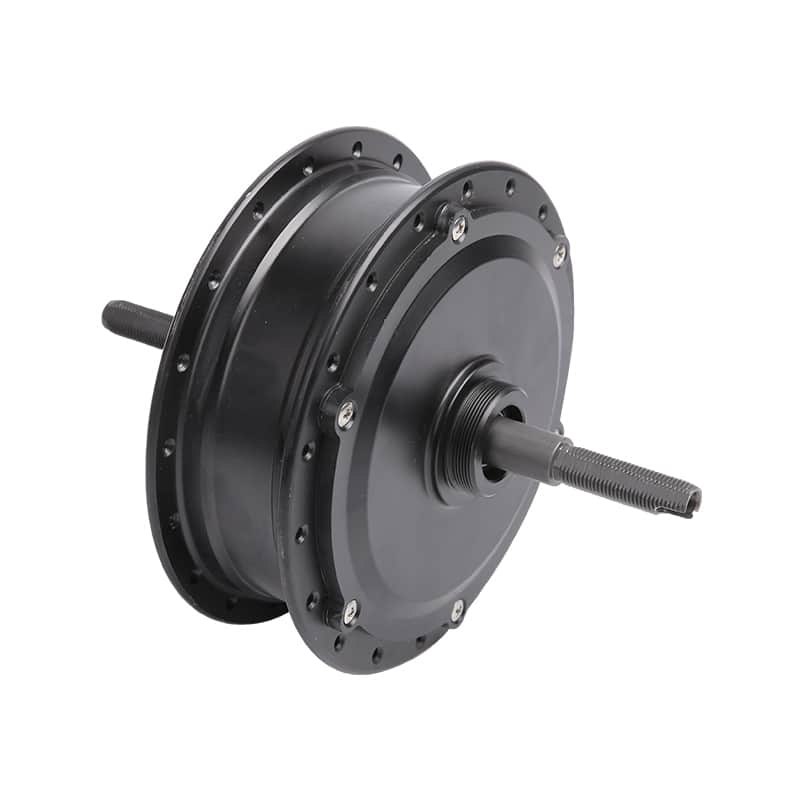Summary:1.Understanding DC Motors:
The commutation method is an critical detail in the operation of electric vehicles, mainly inside the realm of direct cutti...
1.Understanding DC Motors:
The commutation method is an critical detail in the operation of electric vehicles, mainly inside the realm of direct cutting-edge (DC) automobiles. DC cars are broadly utilized across numerous industries and packages because of their simplicity and ease of control. In those automobiles, electric power is furnished via a direct present day, and the commutation system performs a pivotal role in ensuring the continuous and reliable rotation of the motor.
DC motors are preferred in eventualities in which unique pace control, ease of reversibility, and straightforward operation are essential factors. They locate packages in numerous areas, ranging from small family home equipment to automobile systems and business equipment.
2.Components of a DC Motor:
To recognize the commutation process, it is crucial to grasp the fundamental components of a DC motor. The motor comprises two predominant elements: the stator and the rotor. The stator, or desk bound part, carries area windings chargeable for generating a magnetic field. On the other hand, the rotor, additionally known as the armature, incorporates the contemporary and is located in the magnetic subject.
The interaction among the magnetic area and the modern-sporting conductors within the armature generates a mechanical force, leading to the rotation of the armature.
3.Creation of Magnetic Field:
The basis of the commutation procedure lies inside the advent of a magnetic field in the stator. When electric powered current flows thru the sector windings, it generates a magnetic field. This magnetic field is essential for inducing the motion and rotation of the armature.
The power and configuration of the magnetic area decide the torque produced by the motor, influencing its general overall performance and efficiency.
4.Armature Coil and Commutator:
The armature, frequently wound with multiple coils, is a critical issue of the motor. Each coil in the armature is hooked up to a segment of the commutator. The commutator serves as a rotary switch, facilitating the reversal of modern path in the armature coils in the course of rotation.
The interplay among the armature coils and the commutator is valuable to the dynamic technique of commutation, ensuring the continuous flow of present day in a controlled way.
5.Splitting the Current:
As the armature rotates in the magnetic field, the commutator plays a crucial position in splitting the contemporary in every coil. This division ensures that one half of the coil stays inside the location with a north magnetic pole, even as the other half of is inside the area with a south magnetic pole.
The reason of this break up is to maintain a steady path of the pressure exerted on the armature, allowing for smooth and uninterrupted rotation.
6.Brushes and Contact:
To facilitate the non-stop float of cutting-edge from an external power supply to the rotating armature, brushes are hired. Brushes are conductive elements that hold electric touch with the spinning commutator.
The association of brushes and the commutator segments guarantees a continuing and uninterrupted transfer of electrical energy, sustaining the motor's rotation.
7.Reversal of Current:
One of the primary capabilities of the commutator is to effect the reversal of present day route in each armature coil as it actions via the magnetic area. This reversal is vital for maintaining the rotational movement of the armature.
Without the capability to opposite the modern-day direction, the motor might revel in a reversal of rotation or even come to a entire prevent. The commutation technique, therefore, is instrumental in retaining the motor's continuous operation.
8.Preventing Stalling:
Stalling, or the abrupt halt of the motor's rotation, is a scenario that need to be prevented for premiere motor overall performance. The commutation process is important in stopping stalling through ensuring that the direction of the magnetic force on the armature remains steady.
Consistent directionality of the force ensures that the motor keeps to rotate smoothly, preventing any sudden stops or reversals in movement.
9.Maintaining Torque:
The commutation procedure is intricately tied to the concept of torque, that's the rotational force produced with the aid of the motor. By making sure that the contemporary route in the armature coils aligns with the magnetic area, commutation maintains a constant torque on the rotor.


